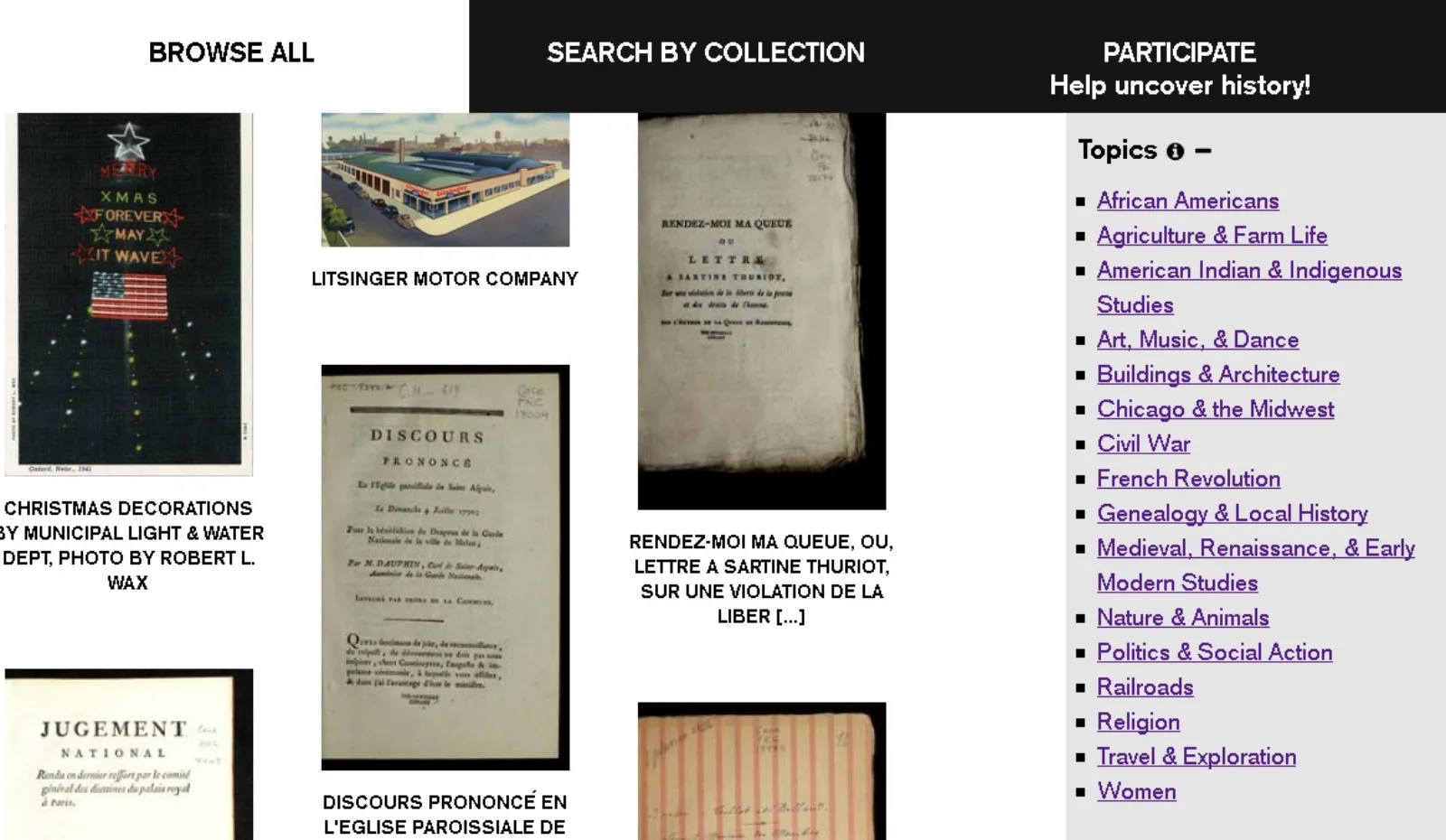We are delighted to announce the launch of Digital Newberry: Collections, a new website that presents users with a single interface for discovering, browsing, and exploring the Newberry’s many digital collections. Digital Newberry: Collections provides direct access to more than 1 million digitized items—all of the images currently available within the Newberry’s rapidly expanding digital universe (though a fraction of the library’s complete holdings).
The site includes a number of new and improved features, including:
-
The ability to keyword -search across all of the Newberry’s digitized material. Topics include Chicago and the Midwest, the French Revolution, Agriculture and Farm Life, and Art, Music, and Dance.
-
Browse All: An infinite scroll feature displays a randomized selection of images, letting users discover new connections among material within and across collections. Faceted browsing allows users to narrow the display by topic, format, collection, or century.
-
Search by Collection: Users can view or search sets of materials organized by theme.
-
Participate: Interactive projects encourage new modes of engagement with collections, including the crowdsourcing site Transcribing Modern Manuscripts, which invites users to contribute to historical scholarship by making handwritten letters and diaries full-text searchable.
Coinciding with the launch of Digital Newberry: Collections is a new webpage displaying all of the Newberry’s digital resources on its website, making it easier to explore the Newberry through digital collections, scholarly publications and research tools, interactive resources, tools designed for education, and online exhibitions.
Along with the recent debut of its open access policy and the release of 100,000 images from the renowned Edward E. Ayer Collection related to American Indian and Indigenous peoples, the Newberry’s Digital Newberry: Collections site represents a significant advancement of its ongoing mission to promote access to collection materials and foster research, teaching, publication, and life-long learning in the humanities.
